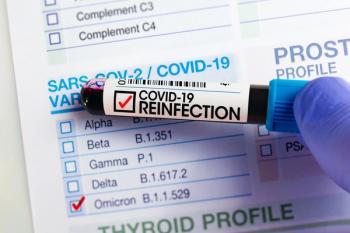
RA Treatment Guidelines
Stanley B. Cohen, MD: Our professional societies have established guidelines for the management of rheumatoid arthritis, and they’ve been updated over time to reflect the changes in our therapeutic options. Generally, the tenets of both the EULAR guidelines and the ACR guidelines are very similar. That is, to use early, aggressive therapy: get the patient with inflammatory arthritis or rheumatoid arthritis sent to the clinic ASAP and initiate disease-modifying therapy. Generally, that will be methotrexate in a large majority of patients, unless there’s a contraindication. Other DMARDs (disease-modifying antirheumatic drugs) could be used, such as leflunomide, sulfasalazine, or hydroxychloroquine. In the higher risk patients who have seropositivity, however—structural damage and so forth—you would start with methotrexate, rapidly escalate the dose to 20 mg or 25 mg weekly, and consider subcutaneous methotrexate if a patient doesn’t respond to the oral methotrexate. But within 3 to 6 months, you will move on to more aggressive therapy. The more aggressive therapy could be combinations: conventional synthetic DMARDs, such as leflunomide, and methotrexate triple therapy; hydroxychloroquine/sulfasalazine/methotrexate; or what most United States rheumatologists do, which is a biologic plus methotrexate—generally TNF inhibitors.
Our target, both in the EULAR and the ACR guidelines, is remission or low disease activity. This was something we could not have done 25 years ago, because we did not have the medications to do that. We also have criteria to measure disease activity, whether that be as the disease activity score, DAS28; the Clinical Disease Activity, or CDA; the Simplified Disease Activity Index, that’s SDAI; or the RAPID3 (Routine Assessment of Patient Index Data 3). We had methodologies to measure disease activity. We monitor disease activity every 3 months or so, and we act on that to try to escalate therapy to get low disease activity or remission.
Now, the reality is that we have limitations. If I have an 80-year-old patient who has diabetes, chronic lung disease, and joint damage by the time I’ve seen them, I’m not going to ever be able to get them into remission. So, I’ll do my best to modify the disease and try to get them into low disease activity, which is a step up from remission.
But, again, the professional society guidelines are very similar. There are minor tweaks here and there, but really the intent is early aggressive therapy, targeting low disease activity remission, monitoring disease activity, and altering your therapy. As far as the criteria—the EULAR criteria and ACR criteria—I don’t think there’s one I would recommend over the other. I think they both encompass the general tenets of what we need to do and they’re really very, very similar. So, I would not choose one over the other. According to the guidelines, anyone with active rheumatoid arthritis should be on treatment. There should not be anyone who’s not on treatment. If you have a burned- out patient with no active synovitis who’s elderly, you might follow them. But, we should be treating all patients early and aggressively, and we should be initiating—based on the guidelines—with a conventional synthetic DMARD, generally methotrexate.
The American College of Rheumatology, along with the EULAR, came out in 2010 with the new diagnostic criteria, which is a point system based on the number of swollen and tender joints the patient has, the presence of rheumatoid factor CCP antibody, the presence of elevated acute phase reactants, and the disease duration—more or less than 6 weeks. Using that point system, we can make a diagnosis of definitive rheumatoid arthritis.
Newsletter
Stay informed on drug updates, treatment guidelines, and pharmacy practice trends—subscribe to Pharmacy Times for weekly clinical insights.


















































































































































































































